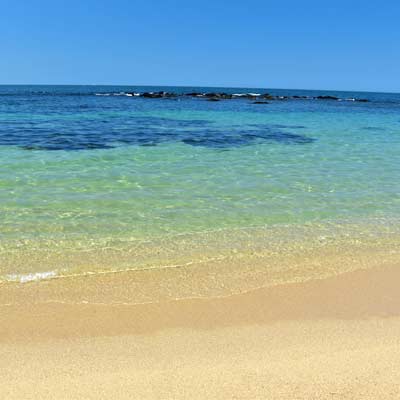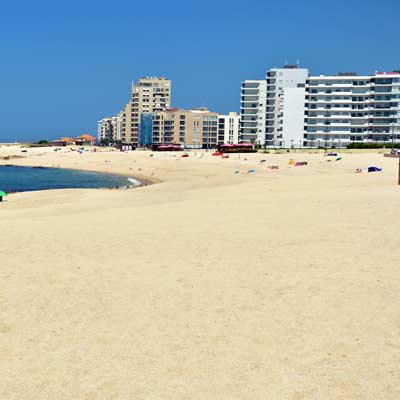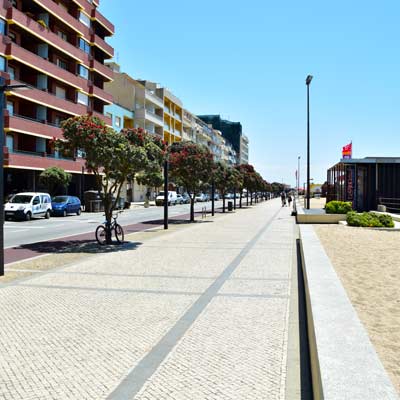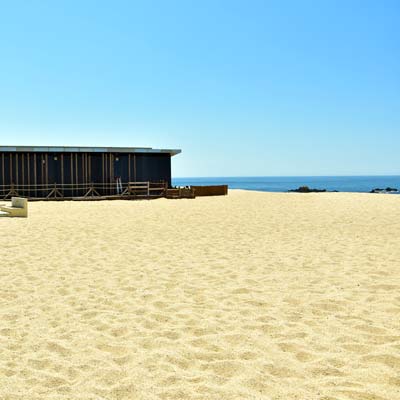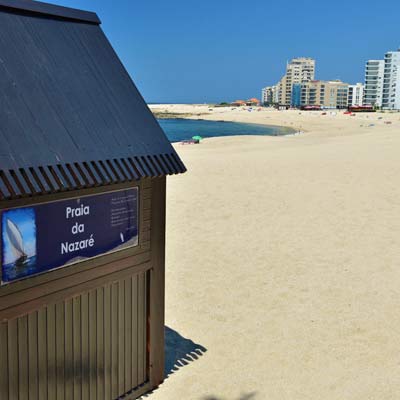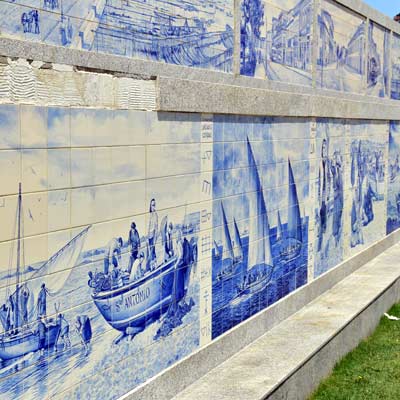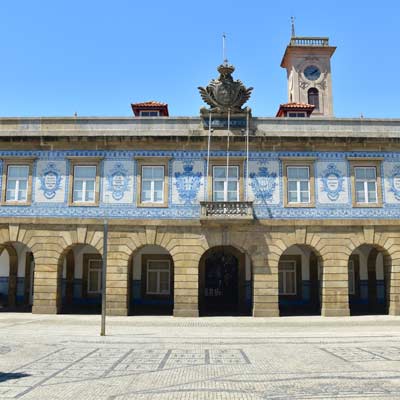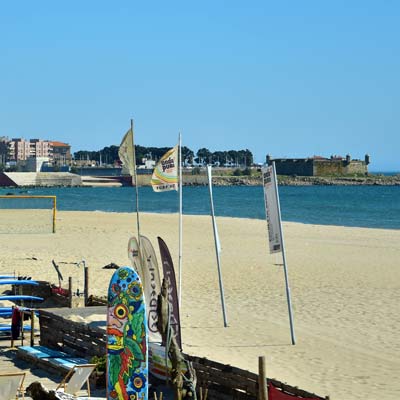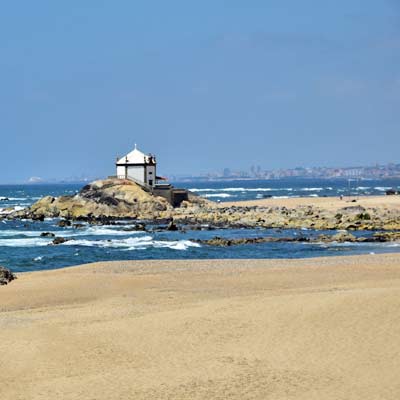Porto-North-Portugal.com
The best independent guide to north Portugal
Porto-North-Portugal.com
The best independent guide to north Portugal
Póvoa de Varzim, Portugal; a day trip, beach and holiday guide for 2026
Póvoa de Varzim offers a quintessential Portuguese summer holiday experience. This is a modern resort town whose identity is defined by its magnificent beach, a vast expanse of golden sand and clean waters that is one of the finest on the Costa Verde.
The town is a cherished and lively destination for the Portuguese, who are drawn by its vibrant atmosphere, excellent value for money, and buzzing social scene. During the summer, the beachfront promenade is full of energy, and the town comes alive with countless restaurants, outdoor cafés, and bars that cater to families and holidaymakers.
This popularity has driven development that favours modern, high-rise apartments built to maximize sea views over historical preservation. However, for those willing to look beyond the contemporary facade, glimpses of a deeper heritage can be found. The compact historic centre contains the formidable Castelo da Póvoa, which guards the harbour, and the ornate Igreja Matriz.
For most foreign visitors, Póvoa de Varzim’s primary appeal is as a fantastic beach day trip from Porto. Its direct connection to the city's metro network makes it incredibly easy to reach for a relaxing day on the sand. This guide will provide everything you need to know about this classic Portuguese resort town.
Why Visit Póvoa de Varzim?
Póvoa de Varzim excels as a destination for a traditional, sun-and-sand holiday focused on relaxation and socialising. It is an ideal choice if you are seeking an authentic Portuguese beach experience that offers exceptional value for money and a wide selection of restaurants and bars. The town provides a full immersion into how the Portuguese enjoy their summer holidays.
For a day trip from Porto, the main objective should be to enjoy the outstanding beach. The town's handful of historic monuments are a pleasant addition for a short stroll but are secondary to the main attraction of the glorious coastline.
The Beaches of Póvoa de Varzim
The main reason to visit Póvoa de Varzim is for its magnificent coastline. A single, continuous sandy beach stretches for over 9km, characteristic of the Costa Verde region with its vast sands, powerful Atlantic waves, and frequent, bracing winds.
For visitors, the coastline can be divided into three distinct areas:
The Central Beaches (Avenida dos Banhos & Enseada da Lagoa) This is the heart of the resort and the most popular section of beach, easily accessible from the town centre. The sand is soft and golden, and the area is almost entirely free from the rocks that dot other parts of the coastline, making it ideal for families. The main beach, Praia Redonda, is supervised by lifeguards during the summer and is close to the casino, restaurants, and the metro station. The waters are clean and clear, though they are always chilly, even in the peak of summer.
The Quieter Northern Beaches Heading north from the town centre, the beaches become progressively quieter and more rugged. Around Praia do Quião, the modern apartments give way to a more natural setting of protected sand dunes. While this area is more peaceful, be aware that there are more rocks along the water's edge, making it less suitable for swimming or bodyboarding.
The Southern Coastline & Surfing - South of the Marina da Póvoa de Varzim, the sandy beaches continue towards the neighbouring town of Vila do Conde, though again with more rocky outcrops. For the best surfing in the region, head 6km north to Aguçadoura Beach, which picks up the best Atlantic swells and has a popular surf school.
Sights & Activities Beyond the beach
While the magnificent beach will always be the main focus, a walk through Póvoa de Varzim reveals a town with a proud history waiting to be discovered.
One of the best ways to start is with a stroll along the extensive beachfront promenade (Avenida dos Banhos). Along the sea wall is the Painéis de Azulejos, a vibrant open-air gallery of traditional blue and white tile panels. These beautiful murals tell the story of the town’s deep connection to the sea, depicting its fishing heritage, local legends, and historic events.
As you approach the fishing harbour, you'll find the town's most formidable landmark, the Castelo da Póvoa. Officially known as the Fortaleza de Nossa Senhora da Conceição, this 17th-century star-shaped fortress was built to defend the vital fishing port from pirate raids. Today, its sturdy walls offer a great vantage point over the harbour entrance.
A short walk inland from the harbour leads you into the town's charming historic centre. The civic heart of Póvoa is the Praça do Almada, an elegant main square shaded by trees and featuring a traditional bandstand. The plaza is dominated by the handsome 19th-century Câmara Municipal (Town Hall), a classic example of Portuguese municipal architecture.
Just off the main square, you will find the Igreja Matriz, the town's principal church. Its relatively plain Baroque façade gives little hint of the treasure inside: a surprisingly lavish and intricate Rococo altar, gleaming with gilded woodwork.
To delve deeper into the town's story, visit the Museu Municipal de Etnografia e História. Housed in a handsome 18th-century manor house known as the Solar dos Carneiros, the museum connects the dots of local history, alongside exhibits on the seafaring traditions.
Travel from Porto to Póvoa de Varzim
Póvoa de Varzim's connection to Porto’s metro network makes it an exceptionally easy and affordable day trip.
The town is on Line B (the red line), which departs from major central Porto stations, including Trindade. An express service takes approximately one hour to reach Póvoa de Varzim. A single ticket from Porto requires a six-zone (Z6) fare, which costs €3.20.
The metro station (GPS: 41.377, -8.758) is on the south-eastern side of town, a 10-minute walk from the nearest beach.

The express metro to Póvoa de Varzim
Accommodation in Póvoa de Varzim
As a popular domestic holiday spot, hotels and rental apartments in Póvoa de Varzim can be fully booked months in advance for the summer season (July and August). To secure the best prices and locations, it is essential to book your accommodation as early as possible.
The map below shows the location of hotels in the town. If you adjust the dates to your holiday, it will display current prices and availability:
Where to Eat in Póvoa de Varzim
The town’s food scene is a major part of its appeal, offering fantastic value and an authentic taste of Portuguese cuisine, with a heavy emphasis on fresh fish and seafood. While there are countless restaurants and cafés, a few highly-regarded spots stand out.
• O Marinheiro: Often cited as one of the best seafood restaurants in the region, O Marinheiro is a local institution. Located north of the main tourist centre, it’s a classic Portuguese marisqueira known for its exceptional fresh fish, grilled squid, and seafood rice dishes. It’s a traditional, no-frills establishment where the quality of the food does the talking.
• éLeBê Póvoa: For those seeking a more contemporary dining experience, éLeBê offers creative, modern Portuguese and Mediterranean dishes in a stylish setting. It’s a great choice for a more refined evening meal.
• Theatro: Housed in a beautifully restored Art Nouveau building that was once the town's first cinema, Theatro combines a restaurant, wine bar, and art gallery into one stylish space. The menu features modern Portuguese and Mediterranean dishes served in a sophisticated atmosphere surrounded by books and art.
Alternative beaches to Póvoa de Varzim
Póvoa de Varzim gets extremely busy in the summer and an alternative, similar beach resort is Espinho. For a day trip, that combines beaches and an interesting historic centre, consider visitingr Vila do Conde. For a quieter and low-key beach for a day trip visit Miramar or Aguda. The largest beach close to Porto is Matosinhos.
The History of Póvoa de Varzim
Long before it became a holiday destination, the Póvoa de Varzim was a fishing community. For centuries, this was one of the most important fishing ports in Portugal, home to a brave and famously close-knit population of fishermen who mastered the treacherous Atlantic waters. This deep maritime heritage is a fundamental part of the town’s character and is the true foundation upon which its later success was built.
The town's evolution into a resort began in the 18th century, driven by a new belief in the therapeutic powers of the sea. The local seawater, naturally rich in iodine from vast offshore seaweed beds, was promoted as a cure for various ailments. This trend, first championed by Benedictine monks from the nearby Monastery of Rates, began attracting visitors from inland Portugal who came for these banhos santos (holy baths). This marked the first great shift in the town's identity, from a purely working port to a place of health and leisure.
This early reputation for well-being evolved over time. By the mid-20th century, the "healing cures" had transformed into the modern concept of the family summer holiday. Generations of Portuguese families developed a deep affection for the town, returning year after year. It was this immense popularity and generational loyalty that fuelled the massive construction boom of the 1970s, giving Póvoa de Varzim the modern, high-rise skyline it has today. In essence, the town's contemporary appearance is a direct result of its long and successful history as one of Portugal's most beloved seaside getaways.
If you've found our content valuable, we'd welcome your support.
The digital publishing landscape has evolved significantly. As a small independent publisher, we face growing challenges. Search engines increasingly favour paid content over organic results, while AI-generated content often reproduces original work without attribution.
To support our work, please consider bookmarking this page (press Ctrl + D) for quick access. If you find an article helpful, we'd be grateful if you'd share it with friends on social media.
For specific questions, please see our Reddit community at r/LisbonPortugalTravel.
Should you notice any outdated or incorrect information, please contact us at [email protected]
Thank you for helping us continue to provide valuable content in an increasingly challenging digital environment.
